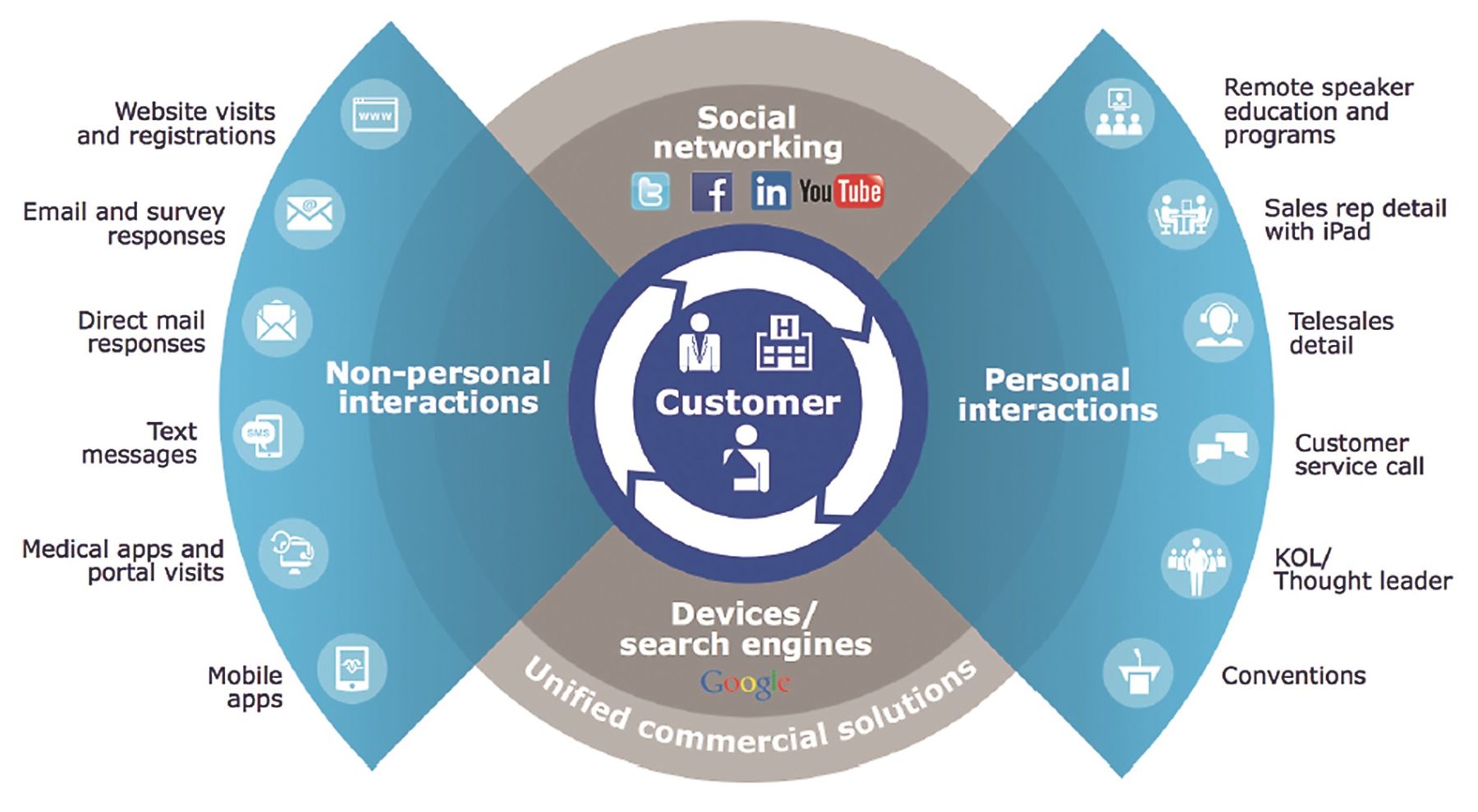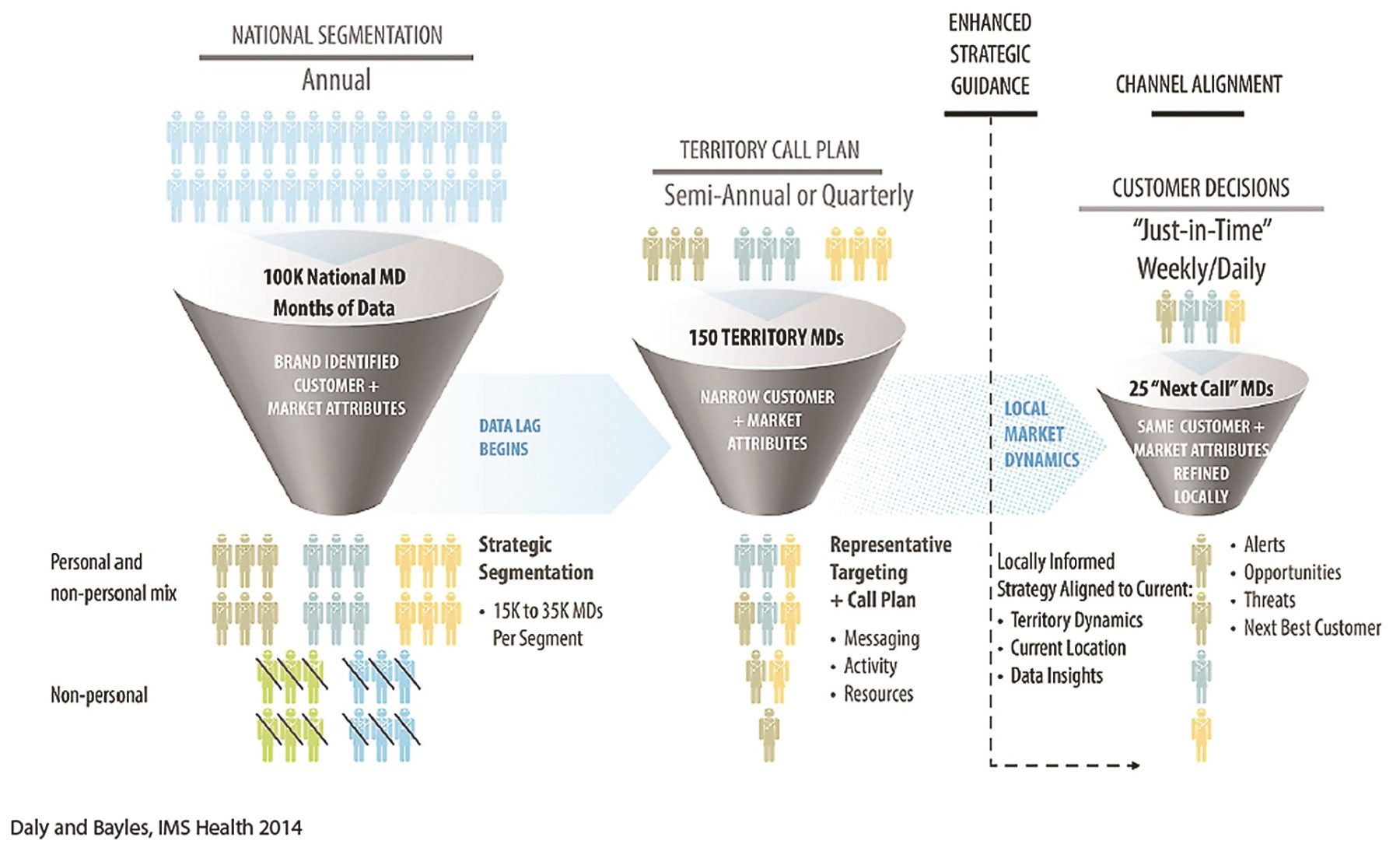To surmount marketplace challenges, many life sciences manufacturers have created new commercial models built on account-based selling, customer-centric selling and multi-channel marketing. Yet innovative as these strategies may be, most organizations have not fully prepared or equipped the sales force to execute them. The result is a gap between strategy and execution that impedes brand performance and growth.
As the largest single channel investment and the strongest lever for influencing customer behavior, the sales force must be aligned to the marketing strategy, empowered to take action and equipped to excel. By employing micromarketing via localized analytics delivered on mobile devices, commercial organizations can make the brand strategy meaningful and actionable in each territory so all parts work in concert, across all channels (Figure 1).
The Need for Localization
The gap between strategy and execution arises when national strategies are not adapted to reflect local market conditions and the information is not presented to reps in a timely, easily digestible way.
For most commercial organizations, sales segmentation is based on customer insights and market dynamics derived months before field activation, aligning customer attributes at a national level across thousands of providers. Then territory call plans or target lists segment local customers, informing the field force of the tactics, messages and resources aligned to each provider’s segment. This process is inadequate when:
- The plan is not consistently adapted for local dynamics, non-personal interaction and changes in the market or with customers.
- Execution is not enriched with a constant and appropriately granular review of territory dynamics.
- Customers are not consistently prioritized and insights that guide actions are not provided routinely during the business cycle.
Meanwhile, territories differ greatly in terms of managed care’s impact, the rate at which early adopters emerge and the share represented by brand-loyal prescribers.
How to Move Beyond the Call Plan
Today’s successful sales model is customer centric, account based, and requires reps to act as business owners. This approach requires the analytics that inform segmentation and targeting at the national level to be refined and actionable at the territory level. And that calls for micromarketing—meaning localized marketing execution powered by mobile technology.
Figure 2 shows how to move beyond the call plan to inform reps’ critical business decisions with current and locally relevant analytics. By making the same advanced analytics that informed strategic decisions at the national level more granular, reps in every territory can have the support they need to advance the business with every decision they make. They can focus on high-priority providers and are empowered with up-to-date insights on local market dynamics.
Best practices for accomplishing this include:
- Updating analytics frequently, automatically and proactively.
- Delivering prioritized guidance on customer actions.
- Providing alerts on opportunities/risks.
- Shaping decisions prospectively with coaching informed by analytics.
- Integrating insights across channels and information across applications.
Building better business practices into the existing framework of the rep’s day keeps actions centered on opportunities and maximizes pull-through at the local level. The constant presence of strategic guidelines and coaching leads to continuous improvement that strengthens ownership and compounds growth over time.
Leveraging Advanced Analytics and Mobile Technology
Sales reps make the majority of their business and territory decisions during the day in-territory while preparing to call on physicians and so are the primary beneficiaries of mobile solutions. A recent Aberdeen Group study, Decisions on the Move: Mobile BI 2013, linked offering mobile business intelligence with a 2.3 times improvement in sales revenue and customer retention year over year. While Sales Force Automation and Customer Relationship Management tools are a good start, much more is possible. Imagine using the tablets that reps already have to provide them with:
- Automated updates on performance trends by customer and territory.
- Alerts aligned to brand strategy and territory growth opportunities.
- A prioritized list of customers by growth potential and customer dynamics.
Imagine how actionable this information can be when it is provided just in time, via a format that is voice-activated and thus hands free and eyes free. This delivery method optimizes drive time and supports easy access to insights and coaching so that reps’ business decisions are consistent with the brand strategy. And this digestible format highlights important insights and minimizes information overload. Ultimately, reps can make better business decisions at every juncture in their day and develop a greater sense of business ownership.
The good news is that all of this is possible with the tablets that reps already have, the information that companies already subscribe to, and current technology applications and analytics.
To ensure success in today’s market, commercial leaders must push the brand strategy deep within sales territories where customer contact occurs daily. Every rep in every territory must be empowered to execute the strategy in terms of the stakeholders, challenges and opportunities unique to that geography at that point in time. The enhanced use of mobile technology can tighten the alignment of strategy and execution within the sales channel and across the entire multi-channel framework, helping the organization drive sales and commercial excellence.






